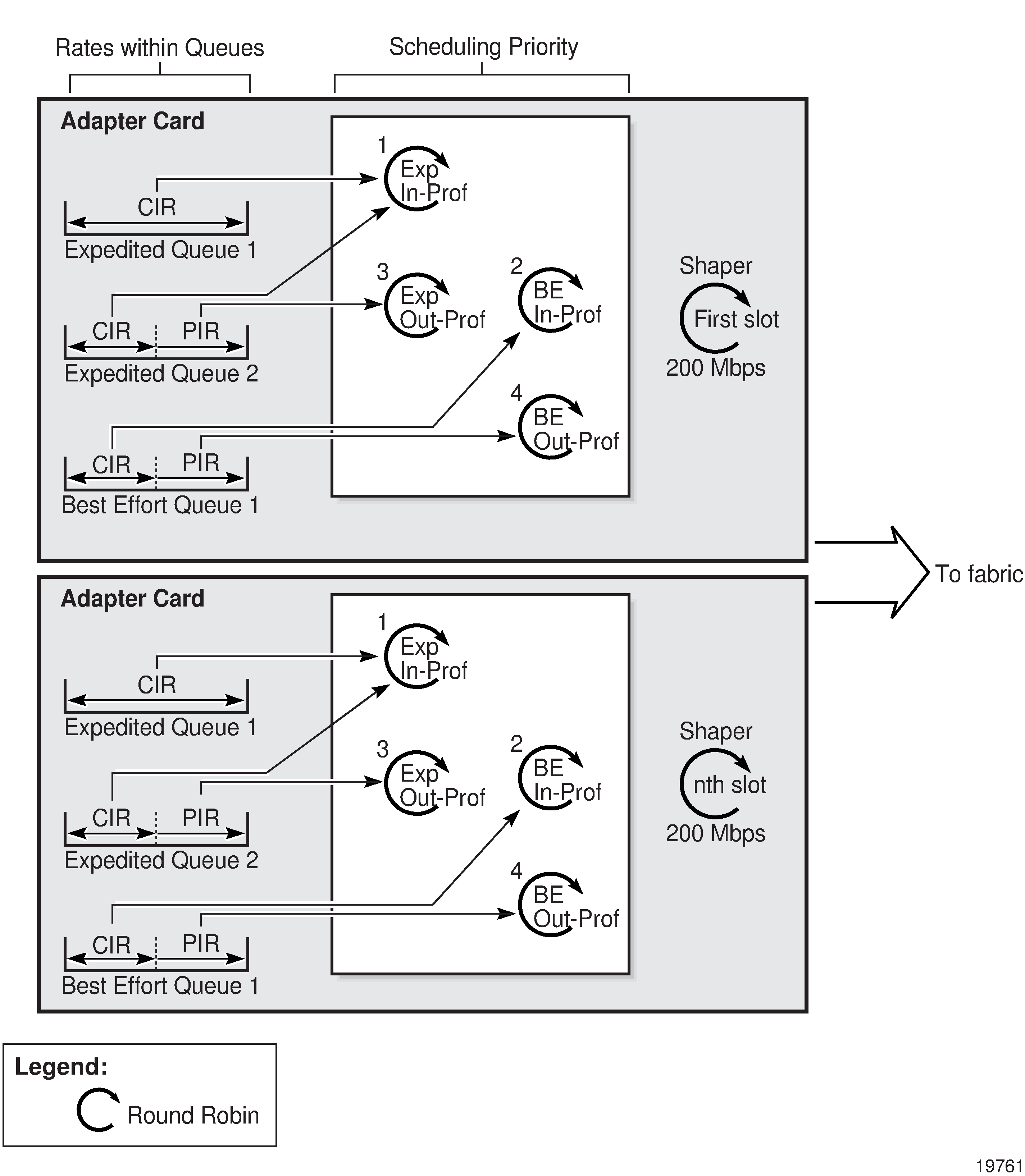4-priority scheduling combines profiled scheduling and queue-type scheduling and applies the combination to all of the access ingress queues. The profile and queue-type schedulers are combined and applied to all the queues to provide maximum flexibility and scalability that meet the stringent QoS requirements of modern network applications. See Profiled (Rate-based) Scheduling and Queue-Type Scheduling for information on these types of scheduling.
Packets with a flow rate that is less than or equal to the CIR value of a queue are scheduled as in-profile. Packets with a flow rate that exceeds the CIR value but is less than the PIR value of a queue are scheduled as out-of-profile.
The scheduling cycle for 4-priority scheduling of CoS queues is shown in Figure: 4-Priority Scheduling. The following basic steps apply:
In-profile traffic from Expedited queues is serviced in round-robin fashion up to the CIR value. When a queue exceeds its configured CIR value, its state is changed to out-of-profile.
Once all of the in-profile packets from the Expedited queues are serviced, in-profile packets from Best Effort queues are serviced in a round-robin fashion until the configured CIR value is exceeded. When a queue exceeds its configured CIR value, its state is changed to out-of-profile.
Once all of the in-profile packets from the Best Effort queues are serviced, out-of-profile packets from Expedited queues are serviced in a round-robin fashion.
Once all of the out-of-profile packets from the Expedited queues are serviced, the out-of-profile packets from the Best Effort queues are serviced in a round-robin fashion.
Note:If a packet arrives at any of the queues marked for Expedited scheduling while the scheduler is servicing a packet from a Best Effort queue or is servicing an out-of-profile packet, the scheduler finishes servicing the current packet and then returns to the Expedited queues immediately.
Figure: 4-Priority Scheduling